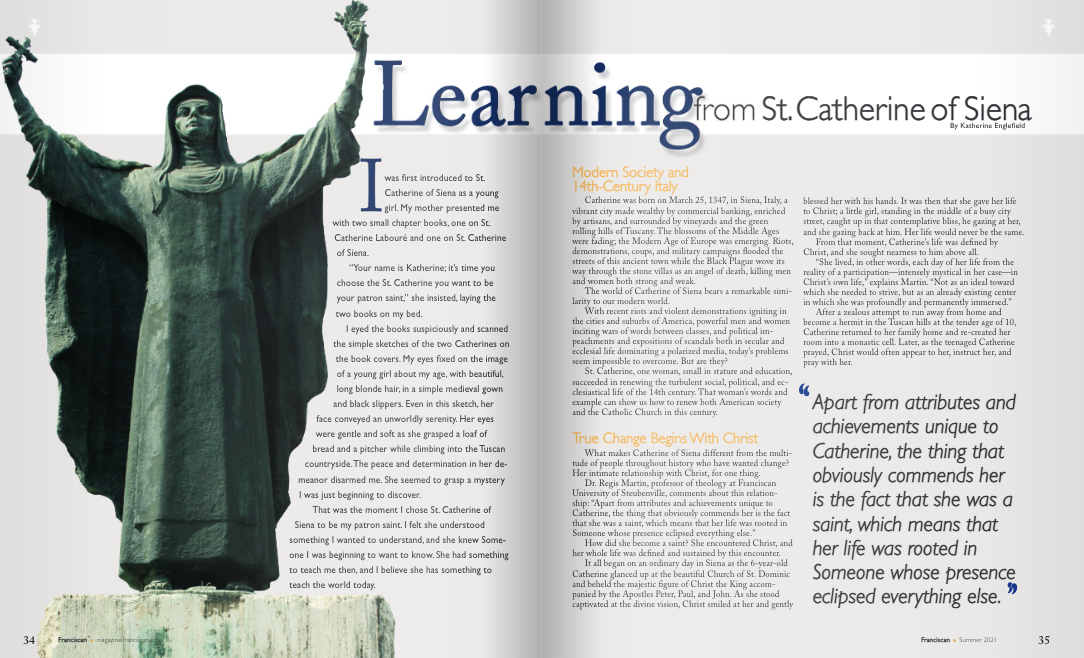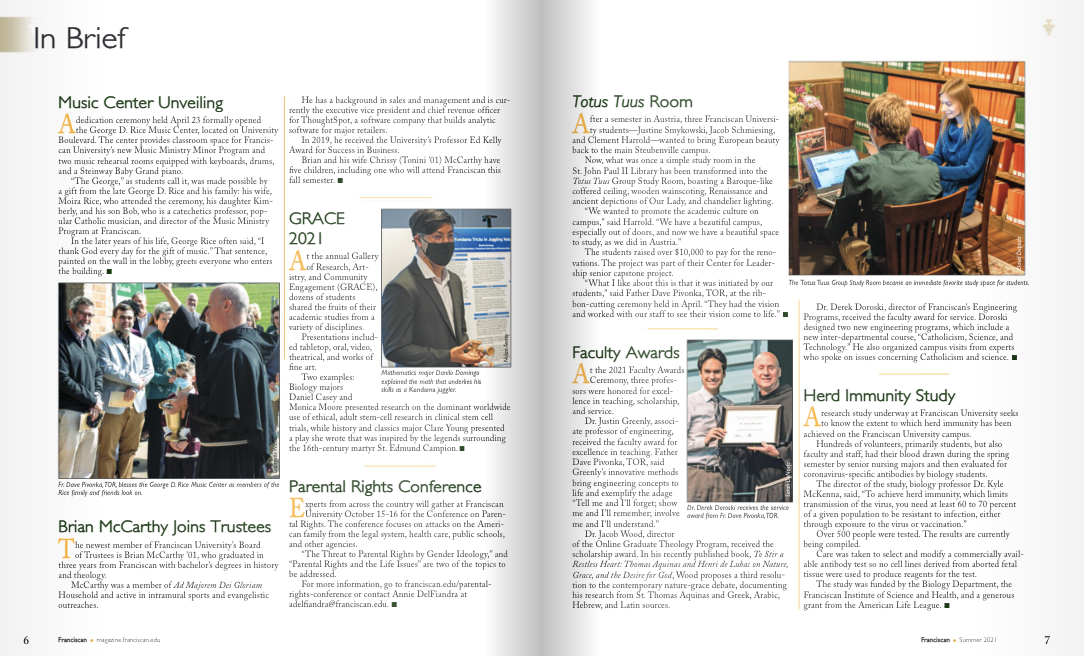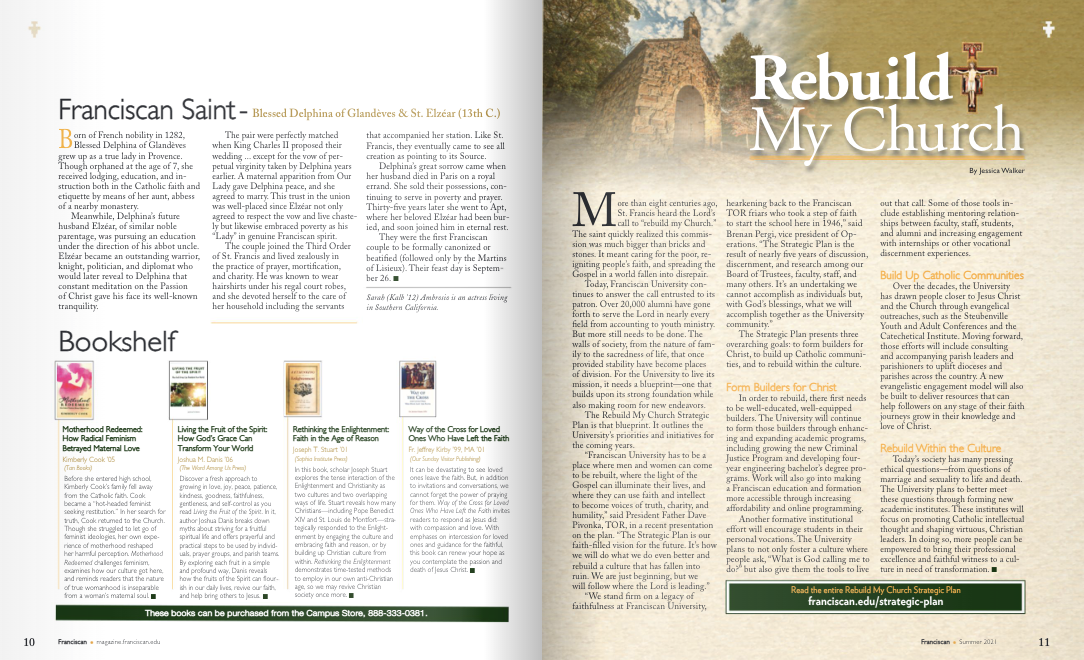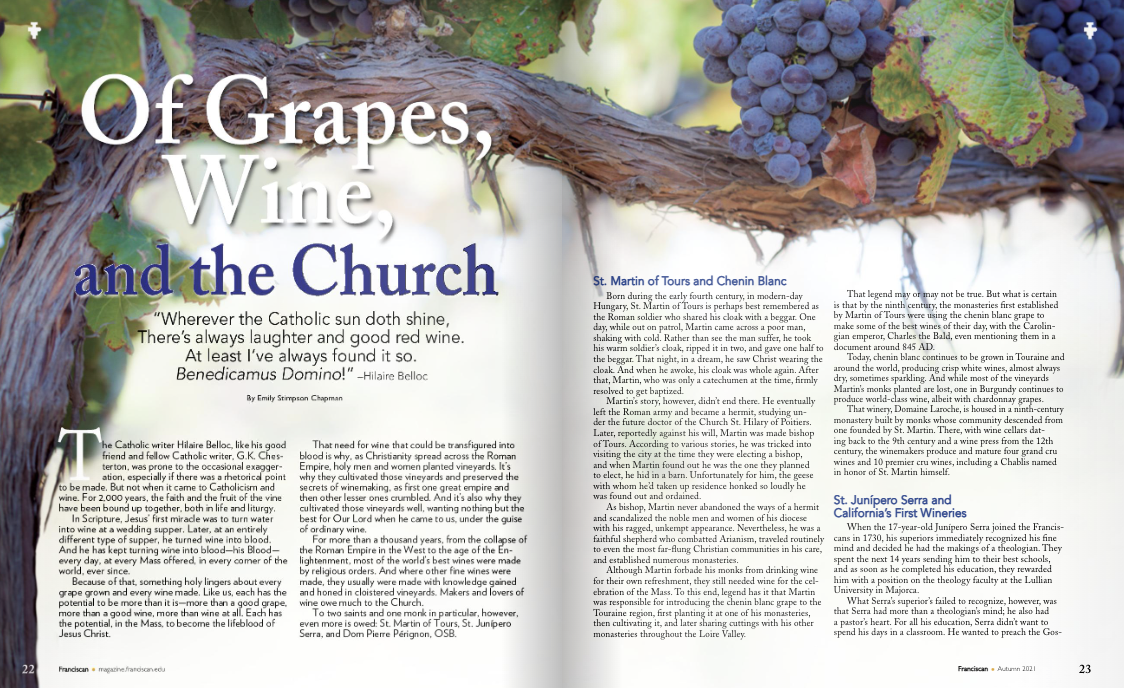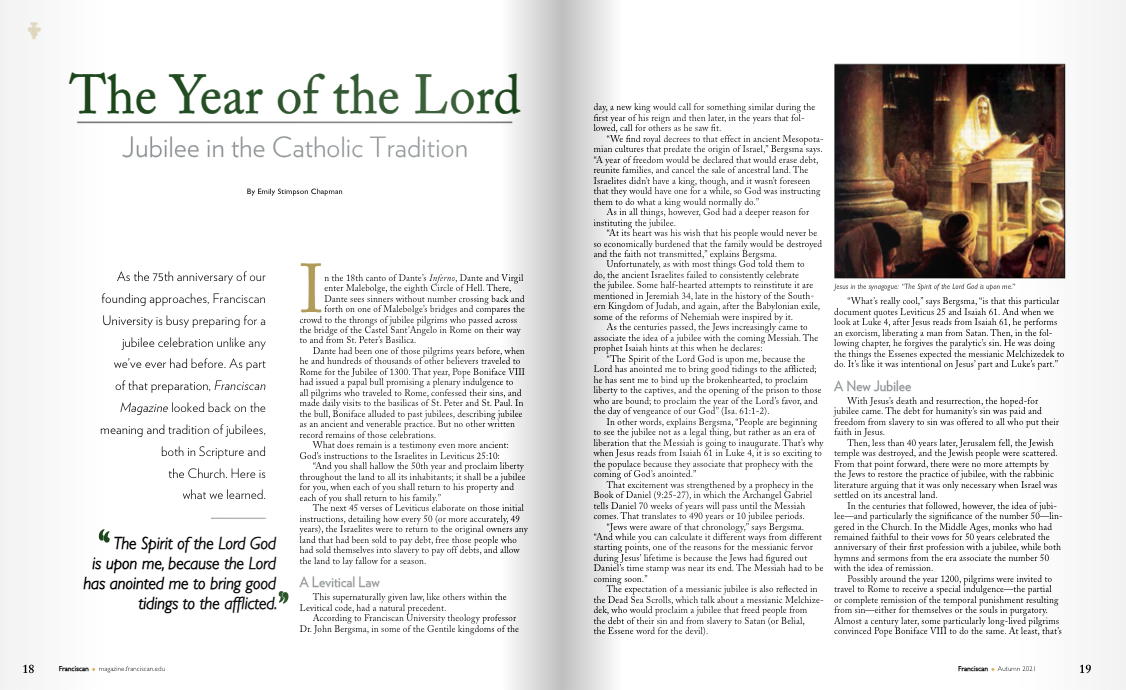I was first introduced to St. Catherine of Siena as a young girl. My mother presented me with two small chapter books, one on St. Catherine Labouré and one on St. Catherine of Siena.
“Your name is Katherine; it’s time you choose the St. Catherine you want to be your patron saint,” she insisted, laying the two books on my bed.
I eyed the books suspiciously and scanned the simple sketches of the two Catherines on the book covers. My eyes fixed on the image of a young girl about my age, with beautiful, long blonde hair, in a simple medieval gown and black slippers. Even in this sketch, her face conveyed an unworldly serenity. Her eyes were gentle and soft as she grasped a loaf of bread and a pitcher while climbing into the Tuscan countryside. The peace and determination in her demeanor disarmed me. She seemed to grasp a mystery I was just beginning to discover.
That was the moment I chose St. Catherine of Siena to be my patron saint. I felt she understood something I wanted to understand, and she knew Someone I was beginning to want to know. She had something to teach me then, and I believe she has something to teach the world today.
Modern Society and 14th-Century Italy
Catherine was born on March 25, 1347, in Siena, Italy, a vibrant city made wealthy by commercial banking, enriched by artisans, and surrounded by vineyards and the green rolling hills of Tuscany. The blossoms of the Middle Ages were fading; the Modern Age of Europe was emerging. Riots, demonstrations, coups, and military campaigns flooded the streets of this ancient town while the Black Plague wove its way through the stone villas as an angel of death, killing men and women both strong and weak.
The world of Catherine of Siena bears a remarkable similarity to our modern world.
With recent riots and violent demonstrations igniting in the cities and suburbs of America, powerful men and women inciting wars of words between classes, and political impeachments and expositions of scandals both in secular and ecclesial life dominating a polarized media, today’s problems seem impossible to overcome. But are they?
St. Catherine, one woman, small in stature and education, succeeded in renewing the turbulent social, political, and ecclesiastical life of the 14th century. That woman’s words and example can show us how to renew both American society and the Catholic Church in this century.
True Change Begins With Christ
What makes Catherine of Siena different from the multitude of people throughout history who have wanted change? Her intimate relationship with Christ, for one thing.
Dr. Regis Martin, professor of theology at Franciscan University of Steubenville, comments about this relationship: “Apart from attributes and achievements unique to Catherine, the thing that obviously commends her is the fact that she was a saint, which means that her life was rooted in Someone whose presence eclipsed everything else.”
How did she become a saint? She encountered Christ, and her whole life was defined and sustained by this encounter.
It all began on an ordinary day in Siena as the 6-year-old Catherine glanced up at the beautiful Church of St. Dominic and beheld the majestic figure of Christ the King accompanied by the Apostles Peter, Paul, and John. As she stood captivated at the divine vision, Christ smiled at her and gently blessed her with his hands. It was then that she gave her life to Christ; a little girl, standing in the middle of a busy city street, caught up in that contemplative bliss, he gazing at her, and she gazing back at him. Her life would never be the same.
From that moment, Catherine’s life was defined by Christ, and she sought nearness to him above all.
“She lived, in other words, each day of her life from the reality of a participation—intensely mystical in her case—in Christ’s own life,” explains Martin. “Not as an ideal toward which she needed to strive, but as an already existing center in which she was profoundly and permanently immersed.”
After a zealous attempt to run away from home and become a hermit in the Tuscan hills at the tender age of 10, Catherine returned to her family home and re-created her room into a monastic cell. Later, as the teenaged Catherine prayed, Christ would often appear to her, instruct her, and pray with her.
“Apart from attributes and achievements unique to Catherine, the thing that obviously commends her is the fact that she was a saint, which means that her life was rooted in Someone whose presence eclipsed everything else.”
Father Timothy Danaher, OP ’09, a Dominican serving St. Patrick’s Parish in the heart of Philadelphia, gives this example of the intimacy and familiarity Catherine enjoyed with Jesus: “As Catherine would pray the Psalms in her breviary, she would say, ‘Glory be to the Father, and to You, and to the Holy Spirit.’ She was praying to Jesus, and he was right there with her.”
Father Danaher toured the city of Siena as a college student during his studies abroad. He visited Catherine’s family home and entered her room where the espousal and exchange of hearts between Jesus and Catherine took place and was moved by the small and ordinary space.
“This is a story with its feet on the ground, an earthly story of heavenly things done here,” he says.
Ambassador of Love
Catherine did not seek fame or notoriety; she sought to know Christ and was commissioned by Christ to step out and minister to the culture.
“Love of me and of neighbor is one and the same thing,” Jesus told Catherine in a vision, “and just to the extent that the soul loves me, it loves him, because love for him comes from me.”
Within this intimacy with Jesus, Catherine discovered her vocation to love her fellow man. The grace poured into Catherine’s soul by Christ spilled over into the streets of Siena where she became a minister of mercy to the sick, homebound, hungry, and impoverished.
“Catherine was a contemplative on the go,” Father Danaher says. “Our calling in the midst of the busy 21st century is to be contemplatives! Catherine never moved on from that. All of her work was operating out of the graces of the contemplative life.”
Catherine the Reformer
Many faithful Catholics today are disappointed, disillusioned, and disheartened when they face the scandals exposed in the Church over the last several decades. In the light of Church history, Father Danaher shares another perspective.
“Looking back into history helps you to breathe deeply because you realize that these saints didn’t exist in a totally pure Church, and they weren’t always liked by their peers,” he says. “Catherine’s century in particular was one of huge changes in the Church that may have tempted people to despair and lose their faith.”
The 14th-century Church was so steeped in worldliness that it didn’t see itself set apart from the world but as an integral piece of all of its power struggles. Catherine did not shy away from reminding the clergy of their vocation to “Be holy men!”
As Martin comments, “Her accomplishments in the public life were impressive, staggering even. Instructing popes and cardinals, adjudicating quarrels among statesmen … these were not things laywomen in the 14th century routinely undertook.”
Catherine’s boldness is disarming; her fidelity to a Church split apart by war and corruption is inspiring. She admonishes the pope not as a critic but as a sister.
“No more simony, no more unbridled luxuries, no more dealers in blood, no more swindlers in what ought to be the temple of God,” St. Catherine wrote to Pope Urban (St. Catherine of Siena, I. Giordani).
After meeting with Catherine in Florence, Pope Urban, in his pomp and worldliness, turned to his advisors in amazement.
“This little woman confounds us,” he said. “For while we are afraid, she stands without fear, and by her persuasions, she gives us courage” (Giordani).
gives us courage” (Giordani). Catherine inspired confidence in the pope by reminding him of his vocation. When writing to Pope Gregory IX during the infamous Avignon crisis, she called him out on a private vow he had made to return the papacy to Rome.
“Catherine told the pope, ‘I know the vow you made. Live up to it. Be a man!’” Father Danaher says. “This proves her calling was from God. Gregory never revealed this vow to her; it was revealed to her by God.”
Catherine addressed a Church with the passion of a lover defending her beloved. What gave Catherine the strength? Father Danaher believes the answer lies in that Catherine, like all the saints, was a faithful daughter of the Church who relied on the Church to nourish her and give her strength.
“Day by day, Catherine was fed by the Church,” he says. “‘Give us this day our daily bread’ (Matt. 6:11). The Church is a mother, and what the Church was then is the same as now.”
How can we defend and protect the Church? By nourishing ourselves with the sacraments as Catherine did and allowing the grace of Christ to permeate our souls so that we indeed become holy.
Model for Christian Women
Catherine famously said, “Be who you are, and you will set the world ablaze.” This truth echoes through the ages, inspiring the modern conscience.
“Catherine was completely herself,” says Father Danaher. “This is a key thing for Christians; we often imitate people to be holy. Catherine was not lost in constant comparisons or leaning on others; she was Catherine! And she knew Jesus, and that really was enough.”
How can Christian women learn from St. Catherine?
“Have a healthy distance from the culture,” advises Father Danaher. “Catherine was very sensitive to the question of ‘where is Christ leading me?’ He was leading her into a place in society that didn’t have an official name.”
Catherine wasn’t afraid to follow Christ there. For the 14th-century woman, there were only two choices: marry young or become a nun in a convent. St. Catherine was called by Christ to neither of these. She lived at home, unmarried but consecrated to Christ within a close community of men and women consisting of laity and some priests. Catherine had the courage to follow Christ into an unconventional life.
“And what defines that life? An intensity of attention paid to God, followed by unstinting service to others. And all along, there is this extraordinary self-forgetfulness, as if she were not at all the chief character in the play,” Father Danaher explains.
Catherine’s untraditional lifestyle was often met with criticism, gossip, and false accusations. Rather than responding defensively to the misogynic attitudes, she responded with love and humility, and in this way, she won the respect of men of every class and status.
During Catherine’s ministry, Fra Lazzarino de Pisa, a well-known Franciscan priest and professor of theology, set about refuting Catherine’s teachings and made it his business to defame her. Offended and angered that an unlearned woman dared to preach and teach, he traveled to Siena and demanded to debate with her.
Catherine graciously received him, but instead of debating, she humbly asked to hear his wisdom. Finding no satisfaction in his own verbal attacks and one-sided debate, the frustrated Fra Lazzarino hurried to leave, and to his surprise, she knelt before him and asked for his priestly blessing. Completely disarmed by her humility, the priest felt himself wrestling with his conscience and suffered a sleepless night plagued by an unordinary depression. The next morning, St. Catherine opened the door to the same priest who now knelt before her in tears, begging for her forgiveness and blessing upon him.
This was the power of this small girl from Siena. Her strength lay in her humble faithfulness to Christ, never demanding respect but living out St. Paul’s teaching to “humbly regard others as more important than yourselves” (Phil. 2:3). Catherine teaches us that humility is the key to disarming violent attacks that engage our world and our Church. Violence begets violence. Humility disarms and inspires.
Saint for the Modern Church
Since that day I chose Catherine of Siena as my patron saint, she has been a steady guide on my spiritual journey. What has Catherine taught me?
Communion with Christ is the spark that will light the world ablaze. Without him, I can do nothing, but with him, “I can do all things in Christ who strengthens me” (Phil. 4:13).
What does St. Catherine teach modern Christians?
That we are not bound by the faults and failures of the culture, and we are more than the corruption we see in our Church. She shows us that we are loved unmeasurably by our God who created us to stand in courage and truth, and that no matter our status, position, gender, or ability, through holiness, through communion with Christ, he can indeed transform the world.
Katie (Kovacs ’03, MA ’07) Englefield is the associate director for Marriage Preparation for the Archdiocese of Cincinnati and lives in Wilmington, Ohio, with her husband, Josh, and their five children.




